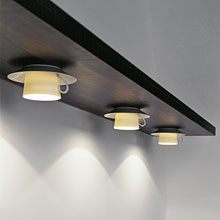If you want to redecorate your entire home, then learning interior design and decorating might be the thing to do. So, with that in mind, interior design software could be one of your purchases, especially if you don't want to  employ a decorator. There are of course advantages and disadvantages to the whole idea of "Do It Yourself". First, If you're not a computer-friendly person then you might find it a bit difficult to pilot the waters of interior design software. Again, there is always the alternative, to get yourself an interior decorator where you will shell out substantially more than you can afford. Which in turn, means that you might have to cut down on some of your decorating needs. If you are anything like me, you would be saying right now - "I don't think so!"
employ a decorator. There are of course advantages and disadvantages to the whole idea of "Do It Yourself". First, If you're not a computer-friendly person then you might find it a bit difficult to pilot the waters of interior design software. Again, there is always the alternative, to get yourself an interior decorator where you will shell out substantially more than you can afford. Which in turn, means that you might have to cut down on some of your decorating needs. If you are anything like me, you would be saying right now - "I don't think so!"
Now, here you are, you have made the decision to give it a go yourself. Leaving the designers and decorators behind. Congratulations! It needn't be as difficult as you think and can even be absolute incredible fun. The only time that you'll truly might get a worry is when you need to do your budget. After that it's a matter of sliding your way downhill through your home interior design plan. And hopefully with barely any bumps or detours. But, those can be exspected, so don't get discouraged, keep moving forward in your interior design plans.
ow back to the software. If you're not too well-situated with your artistic abilities and visual image skills you might look to some relief of a well know friend to help you understand the software. However, if you are a die hard and want to learn it yourself, by all means, don't hesitate. The learning will pay off for you. It doesn't actually matter either way how you go about it as long as you get you home interior design project off the ground
After all there's only so long that you can stand and watch your house fall to pieces around you. Ok, Though that might have been a bit of an exaggeration, if you're thinking about home interior design or remodeling then now is the time to do it. If you put it off now, there's no telling when and if there will be a next timeAnd one of the very first things you can do for your home interior design project will be to decide precisely what you're going to do. For example, are you going to go through the entire house one room at a time or are you going to do only one or two rooms right now. This is an important decision, so take your time and make sure it is what you want to do. This decision dictates the how, what and when of then next phases.
After you decide that, then you can move on to the next phase which is provision, what you're planning to do. And this is where the home interior design software comes in handy. I told you earlier, the learning will pay off, well guess what, here is where it pays off. With this little visual image aid you can imagine what your redecorating plans will do to your rooms and make your life just that much more easier. And in the end that's really what you want isn't it, to make your life easier. So, stop putting it off with excuses. Learn the fundamentals of interior design and decorating, get yourself a good piece of interior design software and bring you home back to life.














